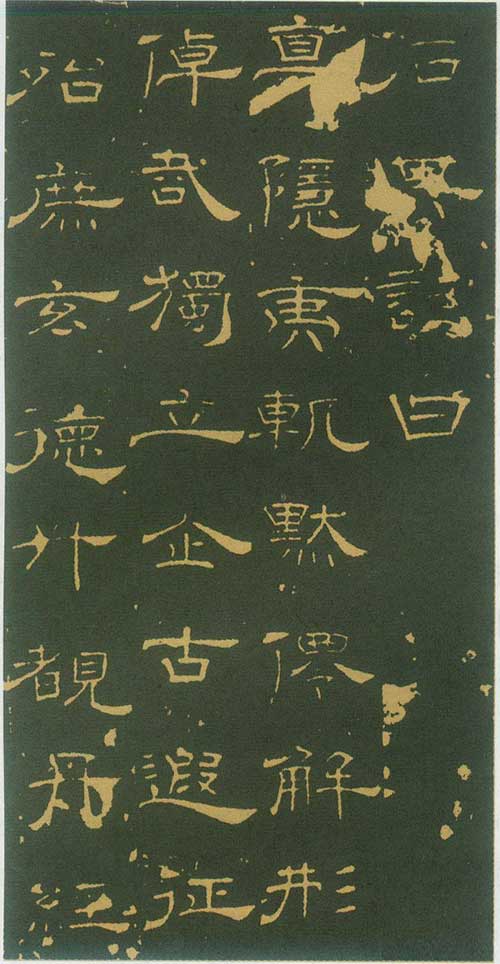Calligrapher of Tang Dynasty. He was born in Guangling (now Yangzhou, Jiangsu) and looked out of Changli (now Tongzhou, Hebei). His birth and death years are unknown. Born around Wu Zetian's longevity (692-694), he was Han Yu's uncle. He was born as a bachelor of the imperial eunuch. During the reign of Emperor Xuanzong of the Tang Dynasty, he served as minister of the Ministry of Rites, Prince Shaobao, and bachelor of the Jixian Academy. Over seventy years old. He was also a regular attendant of Yousanqi, so he was called "Han Changshi". He has served as a calligrapher to the prince and kings for more than ten years. He is a senior and full-time calligraphy teacher in the royal family. He had friends with Yan Zhenqing, worked with Xu Hao in Jixian Academy, and also had contacts with Shi Weize.
Han Zemu was famous for his official script in the prosperous Tang Dynasty, and his style was strict and vigorous. Dou Xie's "Shu Shu Fu" discusses the official script of the Tang Dynasty, and Han Zemu is the first to recommend it, saying, "Han Changshi is eight points of Zhongxing, Bo Zhe (Cai Yong) is still here, the beauty of light and harmony, iterations in ancient and modern times" Li Xue has recommended Cai Yong as the best since ancient times , Cai Yongfa of the Han clan. It can be seen that the selection instinct is to pursue Cai Yong's legacy, which is romantic and leisurely. Therefore, Chen Si's "Shu Xiaoshi" in the Southern Song Dynasty said that he learned from Cai Yong, and was romantic and leisurely. This is enough to show the high attainments of Choemu Lifa. Zhao Mingcheng's "Jinshilu" said that the writing style of the main book "Epitaph of Princess Zhu of Xingyang" is fresh and lovely. There are many stone carvings extant, including the "Information to Hua Yue", the "Stele of Ye Huiming", and the "Stele of the Great Lawyer of Jianfu Temple Lintan". The epitaph of Princess Zhu of Xingyang in regular script is fresh and lovely. "Gao Hua Yue Wen", the full name of "The Monument of Gao Wen in Sacrifice to the God of Xiyue", was inscribed in the first year of Tang Tianbao (742). In Yuemiao, Huayin County, Shaanxi Province. Written by Han Shang, Han selected this book. Official script, 20 lines, 15 characters in each line, and 10 characters in seal script "built on June 19, the 13th year of Kaiyuan" on the forehead. The stone is intact. The calligraphy on this stele is dignified and rigorous, which may be due to the influence of the fashion of the times. However, if you look closely at the details, there are many lively and smart parts. This monument is very beautifully written and very popular among people. Zhao Kan of the Ming Dynasty said in his "Graphite Engraved Flowers": "Although the posture and characters are not majestic and majestic, they are solemn and awe-inspiring."

"Epitaph of the Lord of Nanchuan County" was established in the 24th year of Kaiyuan period of Tang Dynasty. The height and width are 61 cm each and are now in the Shaanxi Provincial Museum. "Xuanhe Shupu" said: "The beauty of official script is only that of Cai Yong. Choosing Mu can pursue his legacy, which is leisurely and charming. The world calls Cai Yong Zhongxingyan." His regular script is rare, elegant and colorful, similar to Yu Shinan. It is an excellent epitaph of the Tang Dynasty.








